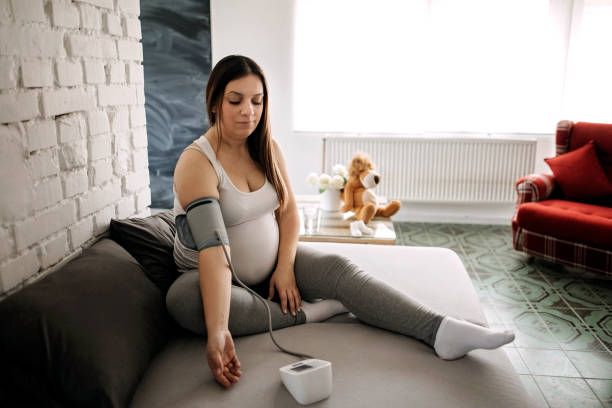Digital health innovations are accelerating how care is delivered, tracked, and bridging gaps in the healthcare system. From remote patient monitoring (RPM) and wearable biosensors to AI-driven care platforms and culturally tailored interventions, these technologies are helping providers prevent complications, and improve outcomes.
This article explores real-world digital health innovations currently being deployed across maternal health, chronic condition management, and personalized patient monitoring. These technologies reflect a growing shift toward proactive, equitable, and home-based care models.
Enhancing Maternity Care with Digital Health Innovations
At Ochsner Health, maternal care is changing with two digital health innovations: connected Maternity Online Monitoring (MOM) and TeleStork. These programs leverage remote monitoring for improved proactive prenatal and postpartum care. These technologies mitigate risks and enhance maternal and neonatal outcomes.
Connected MOM enables remote pregnancy blood pressure monitoring to identify pregnancy-related complications such as preeclampsia. Similarly, TeleStork allows nurses to monitor laboring mothers remotely. This increased oversight is reducing NICU admissions and unnecessary cesarean sections.
As a result of these initiatives, Ochsner Health system reduced NICU admissions by 27% for term infants and lowered cesarean sections by 8%. These initiatives provide clear evidence of how digital health innovations can elevate outcomes.
Wireless Biosensors: VitalPatch by VitalConnect
One of the most advanced digital health innovations in real-time monitoring is the VitalPatch, developed by VitalConnect. This FDA-cleared wearable biosensor continuously monitors ECG, heart rate, respiratory rate, and body temperature, streaming data securely to care teams.
Unlike traditional in-hospital monitoring systems, VitalPatch is designed for home-based use, enabling continuous patient oversight without sacrificing comfort or mobility. It supports earlier intervention and better post-discharge follow-up for patients with cardiac or respiratory risks.
Wireless Skin Patches Digital Health Innovations
Another innovation redefining at-home care is Smart Skin by X-trodes. It is an FDApcleared wireless monitoring patch system for advanced electrophysiological monitoring. Smart Skin uses flexible electrode patches to monitor and track EEG, EKG, EOG, and EMG signals.
Recent research showed its efficacy, and how it aids in early detection of health issues and fosters proactive intervention. Smart Skin enables continuous, personalized monitoring for sleep disorders, neurological tracking, and rehabilitation.
Research Addressing Disparities in Hypertension Management
A systematic review published in JAMA Network examined the use of digital health innovations on hypertension management in underserved communities. This analysis showed effectiveness in reducing systolic blood pressure, particularly among Black and Hispanic individuals and socioeconomically disadvantaged communities.
Key findings in the study include:
- Participants had greater reductions in systolic blood pressure at 6 months (-4.24 mmHg), and 12 months (-4.30 mmHg) compared to standard care.
- 60% of studies focused on Black or Hispanic populations and over half targeted socioeconomically disadvantaged groups.
- Many programs included remote blood pressure monitoring, culturally adapted messaging and community health worker engagement.
These results highlight how thoughtful digital design can improve chronic disease outcomes and address systemic health disparities.
Understanding the Latest in Digital Health Innovations
Digital health innovations offer tailored solutions to diverse healthcare challenges. Research continues to unveil the increased potential of digital health interventions. Tenovi will continue to keep healthcare leaders aware on the latest digital health innovations with our weekly research summaries.
Tenovi offers an accurate and easy-to-use RPM solution that boosts workflow efficiency and patient satisfaction and generates revenue. With over 100 RPM companies using our services, we are experienced in scaling remote patient monitoring projects. Schedule a free demo, and get ready to meet a better RPM experience with Tenovi.


